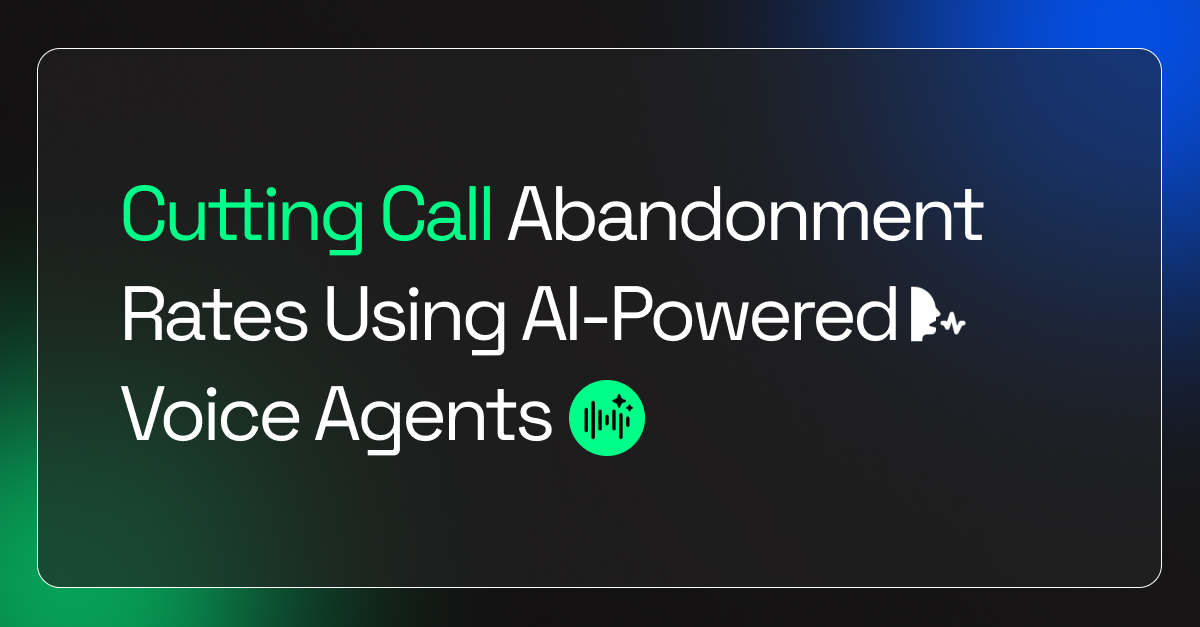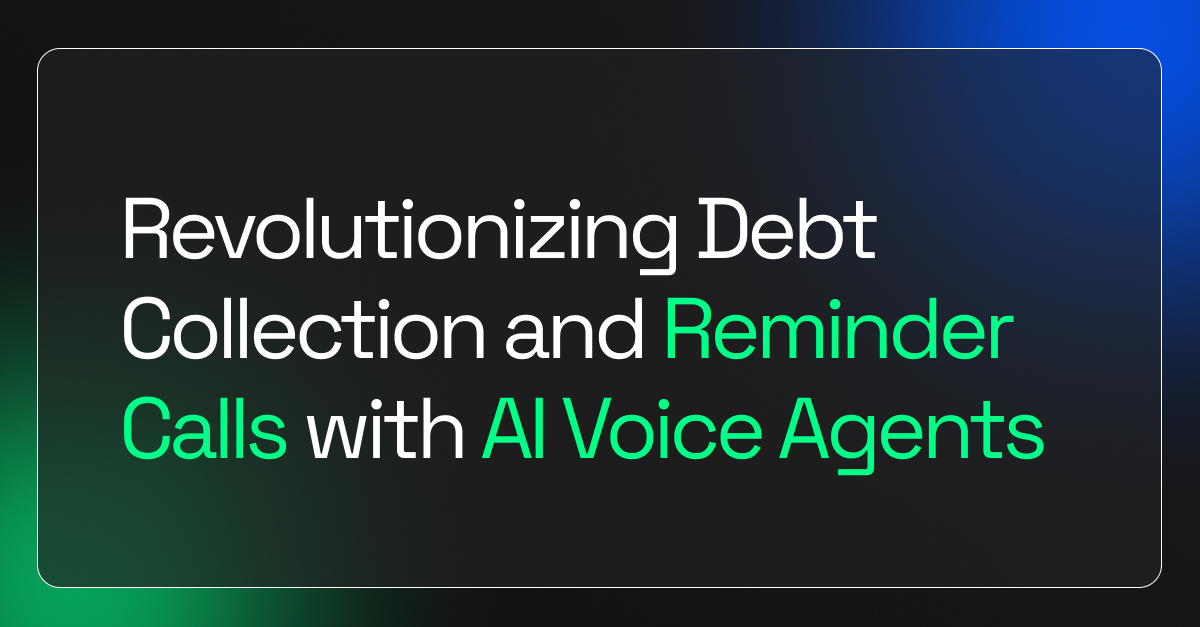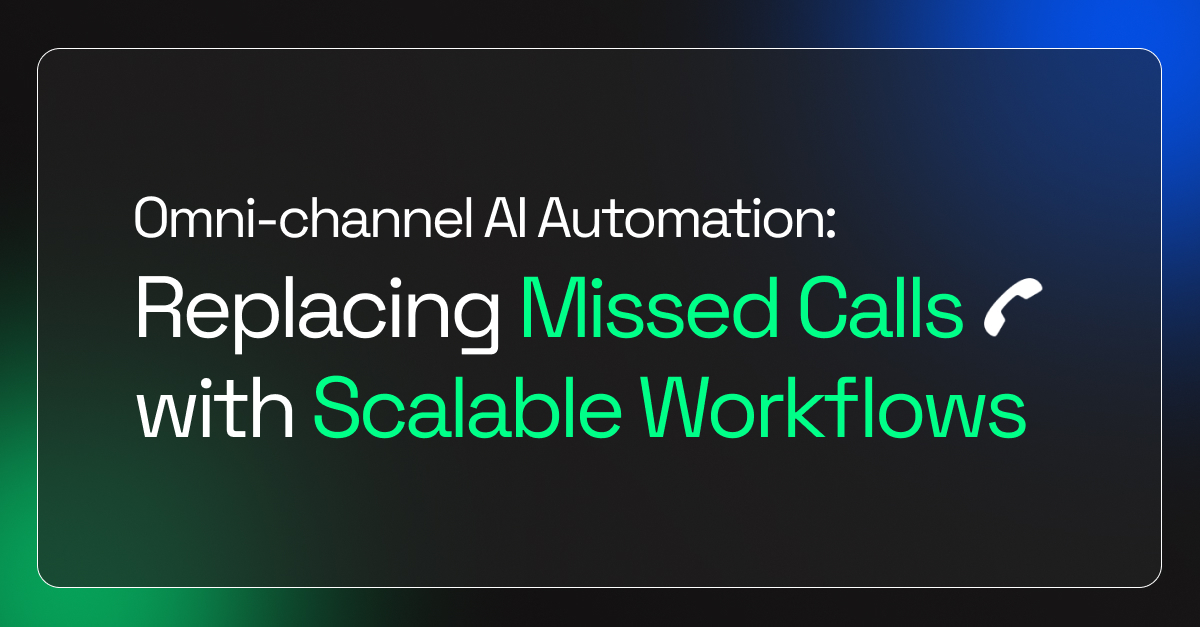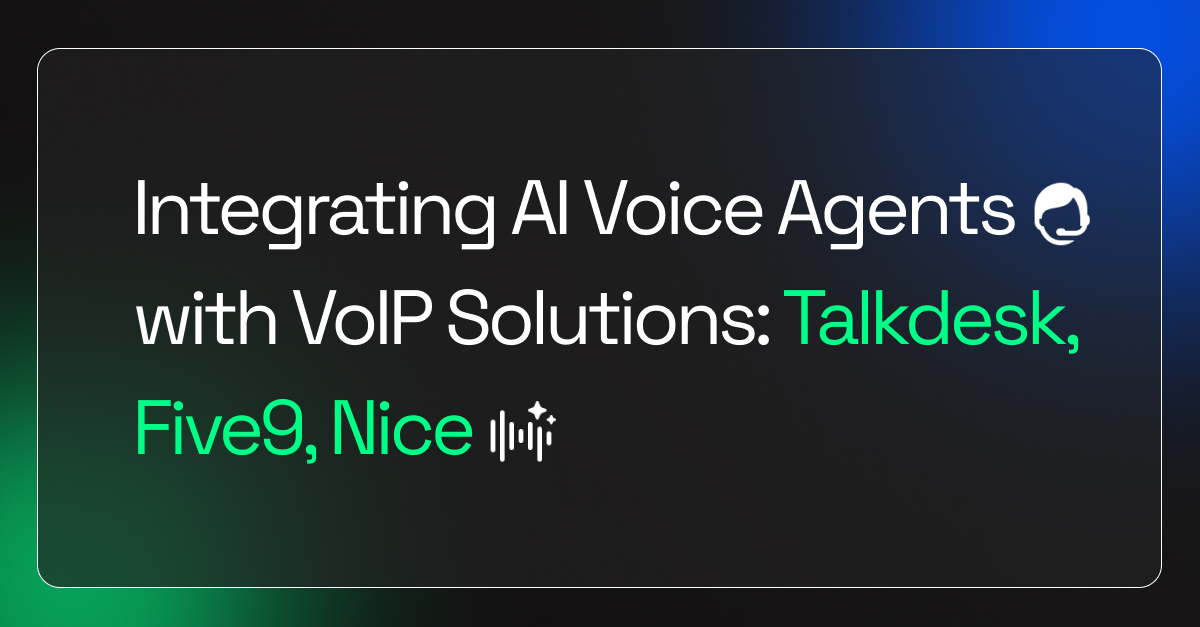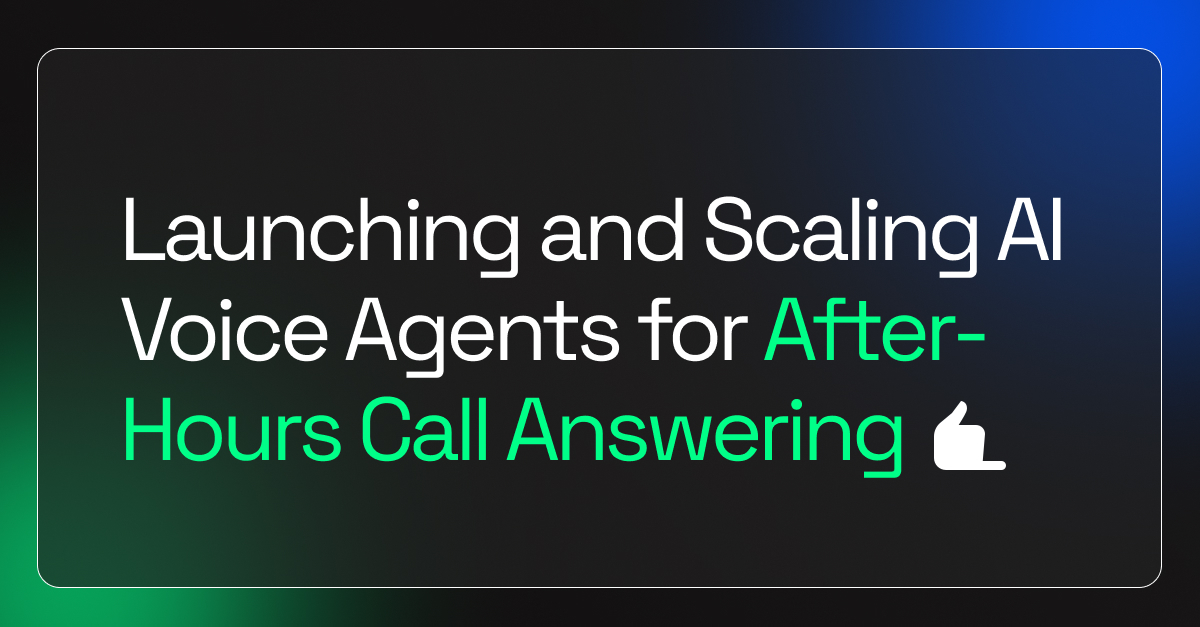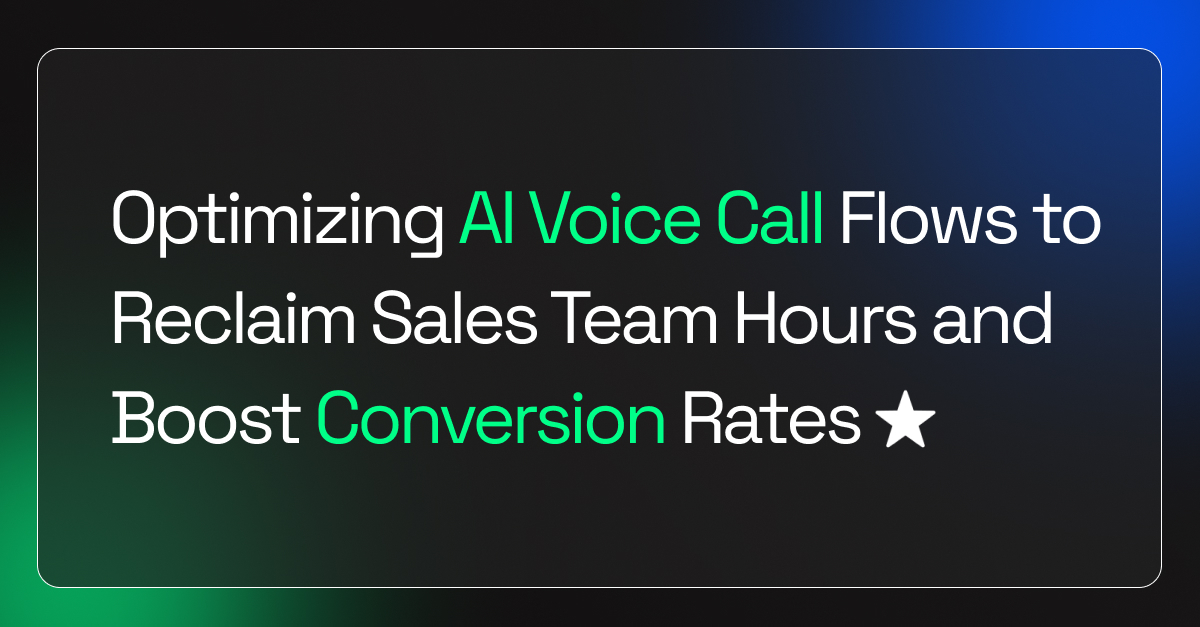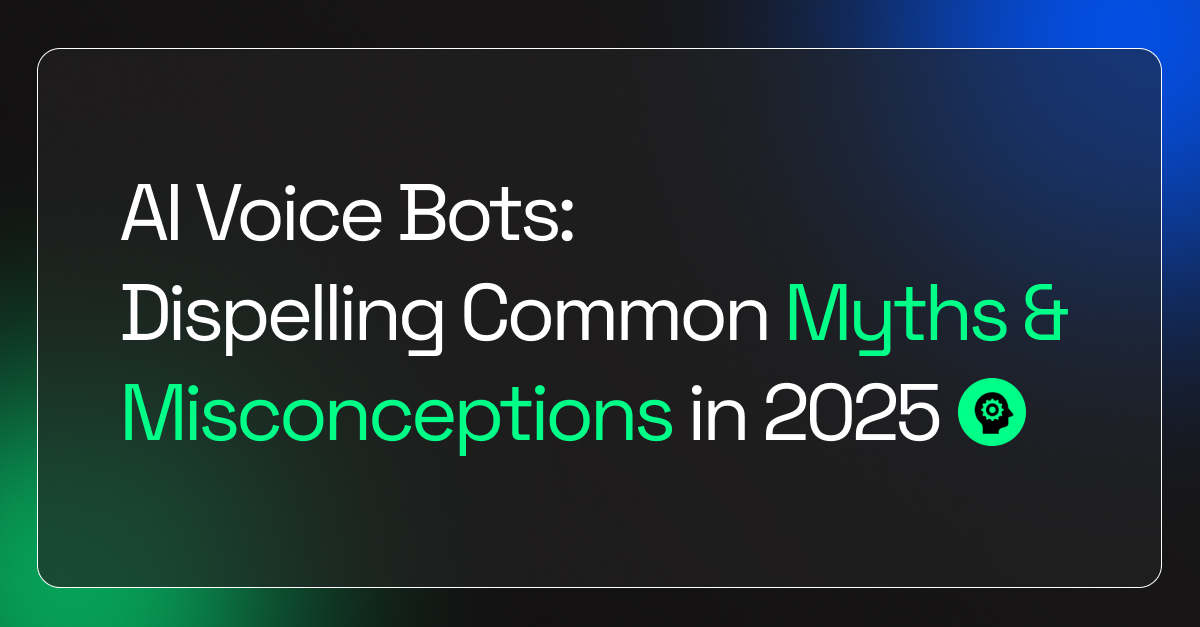Waiting on hold for a live agent or navigating complex IVRs is no longer acceptable—customers demand instant, personalized, and intelligent interactions. This is where AI voice agents come into play.
AI-powered voice agents, like VoiceGenie, are not just digital answering machines—they are intelligent communication assistants capable of handling inquiries, routing calls dynamically, and even analyzing sentiment in real-time.
When integrated with modern VoIP platforms, these AI agents unlock a new dimension of efficiency and scalability for businesses, transforming traditional call centers into smart, automated CX hubs.
Imagine a scenario where an incoming call is automatically recognized, routed to the right department, and the customer’s query is addressed immediately by an AI agent, with real-time analytics feeding back to your CRM.
This is no longer futuristic—it’s achievable today. In this blog, we explore how AI voice agents can be seamlessly integrated with major VoIP providers like Talkdesk, Five9, and Nice, and how these integrations can dramatically enhance customer experience (CX), operational efficiency, and scalability.
Why Integrate AI Voice Agents with VoIP?
Integrating AI voice agents with VoIP platforms is not just a technical upgrade—it’s a strategic business move. Here’s why:
- Real-Time Automation at Scale
VoIP platforms are built for flexibility and connectivity, but without AI, they rely heavily on human agents for every call. Integrating AI voice agents allows businesses to automate routine tasks, from verifying account details to answering FAQs, without compromising the customer experience. With VoiceGenie, even complex interactions can be handled intelligently, freeing human agents for higher-value tasks.
- Enhanced Customer Experience (CX)
Modern consumers expect instant, accurate, and empathetic interactions. AI voice agents excel at reducing wait times, dynamically routing calls, and providing 24/7 support. Real-time sentiment analysis ensures that AI can detect frustration or urgency and escalate appropriately—making every call contextually intelligent.
- Data-Driven Insights
Every interaction with an AI voice agent generates valuable data. When paired with VoIP systems, this data can be seamlessly analyzed to identify patterns, measure performance, and optimize call flows. Businesses gain insights into peak call times, common customer pain points, and agent performance—turning every call into a strategic advantage.
- Scalability Without Compromise
As call volumes grow, traditional call centers struggle with staffing and training bottlenecks. AI voice agents integrated with VoIP solutions like Talkdesk, Five9, or Nice can scale effortlessly, handling hundreds of simultaneous interactions while maintaining consistent quality and accuracy.
- Cost Efficiency & Operational Agility
AI voice agents reduce the dependency on large call center teams for routine interactions, significantly lowering operational costs. Moreover, the flexibility of VoIP platforms combined with AI allows businesses to adapt quickly to market shifts or seasonal spikes, without long lead times for hiring or training.
In essence, integrating AI with VoIP transforms your contact center into a next-gen communication ecosystem—one that is intelligent, data-driven, and capable of delivering exceptional CX at scale.
Key Considerations Before Integration
Before diving headfirst into integrating AI voice agents with VoIP platforms, businesses need to align on several critical technical and operational factors. A seamless integration requires more than just connecting APIs—it demands foresight, planning, and strategic alignment.
1. API & SDK Compatibility
Modern VoIP platforms like Talkdesk, Five9, and Nice offer robust APIs and SDKs to facilitate integration. Before implementing, it’s essential to evaluate API endpoints, authentication mechanisms, and data formats. VoiceGenie, for example, leverages RESTful APIs that can ingest and respond to VoIP call events in real-time, ensuring the AI agent operates as an intelligent extension of your existing infrastructure.
2. Data Security & Compliance
With calls often containing sensitive customer information, data security is paramount. Verify that your AI agent complies with industry standards such as GDPR, HIPAA, or PCI DSS, depending on your vertical. VoiceGenie integrates secure end-to-end encryption and token-based authentication, providing peace of mind while processing sensitive interactions.
3. Scalability & Performance
AI voice agents must handle variable call volumes without latency or degradation in quality. Consider the server infrastructure, concurrency limits, and cloud orchestration. Platforms like VoiceGenie are built to scale dynamically, handling hundreds or thousands of simultaneous interactions while maintaining conversational accuracy.
4. CX Impact & Metrics
Integration is only valuable if it improves the customer experience. Define clear KPIs: first-call resolution, average handling time, and customer satisfaction (CSAT). AI agents can also track sentiment and conversation patterns, enabling businesses to optimize call flows and refine CX strategies continuously.
5. Customization & Flexibility
Every business has unique workflows and IVR structures. The AI agent must be configurable to mirror your call logic, support dynamic scripts, and adapt to various business scenarios. VoiceGenie’s platform allows developers to design custom conversational flows and plug them directly into VoIP endpoints.
Integration Paths with Major VoIP Providers
Integration is not one-size-fits-all. Each VoIP provider offers unique capabilities and integration approaches. Below is a practical breakdown of how to integrate VoiceGenie with the leading platforms:
4.1 Talkdesk AI Integration
- Overview: Talkdesk is a cloud-based contact center solution with extensive AI support.
- Integration Approach:
- Utilize Talkdesk’s Open API to route incoming and outgoing calls to VoiceGenie.
- Configure event triggers for call start, end, or hold events to enable real-time AI responses.
- Sync call logs and transcripts automatically for analytics and CRM updates.
- Use Cases: Automated FAQ handling, lead qualification, and dynamic call routing.
- Tech Tip: Implement webhooks for real-time event handling to minimize latency.
4.2 Five9 AI Integration
- Overview: Five9 offers a cloud contact center with predictive dialing and IVR capabilities.
- Integration Approach:
- Connect via REST API and Webhooks to handle incoming call events.
- Configure AI scripts to interact with IVR prompts, ensuring smooth conversation handoffs.
- Leverage Five9’s real-time analytics to monitor AI performance and adjust strategies.
- Use Cases: Predictive call routing, outbound campaigns, and customer verification.
- Tech Tip: Start with pilot campaigns to fine-tune AI responses before full-scale deployment.
4.3 Nice AI Integration
- Overview: Nice CXone provides workforce optimization, AI-assisted analytics, and omnichannel support.
- Integration Approach:
- Use APIs to augment live agent interactions with AI-generated suggestions.
- Enable AI to summarize calls, analyze sentiment, and flag critical issues for human agents.
- Sync AI insights into dashboards for operational decision-making.
- Use Cases: Sentiment-driven call escalation, agent coaching, and automated reporting.
- Tech Tip: Implement real-time transcription and sentiment scoring to enhance agent productivity.
Best Practices for Seamless Integration
Integrating AI voice agents into VoIP is more than connecting systems—it’s about orchestrating technology and people for maximum impact. These best practices ensure success:
- Maintain Consistent Call Flow Logic
- Ensure AI conversational paths align with existing IVR and call routing.
- Test every scenario for edge cases to prevent dead-ends.
- Monitor Call Quality & AI Accuracy
- Use analytics dashboards to track AI performance.
- Adjust scripts or intent recognition models in real-time based on insights.
- Start with Pilot Programs
- Deploy AI in controlled environments first.
- Collect data, refine scripts, and gradually scale to full operations.
- Regularly Update AI Scripts
- Customer behavior evolves. AI scripts must reflect changing FAQs, product updates, and new processes.
- Prioritize Security & Compliance
- Regularly audit integrations for data privacy adherence.
- Implement role-based access and encrypted data pipelines.
- Leverage Analytics for Continuous Improvement
- Track KPIs like first-call resolution, handle time, and CSAT.
- Use AI insights to continuously optimize call routing and CX.
Measuring Success
Once AI voice agents are integrated with VoIP solutions, it’s essential to quantify the impact to ensure ROI and identify areas for optimization. Measuring success isn’t just about call volume—it’s about efficiency, customer satisfaction, and business outcomes.
Key Metrics to Track:
- First-Call Resolution (FCR)
- How often the AI agent resolves the customer’s query on the first interaction.
- VoiceGenie’s natural language processing (NLP) capabilities enable high FCR by understanding context and intent accurately.
- Average Handling Time (AHT)
- Measures the time taken to resolve customer inquiries.
- Integration with VoIP platforms ensures seamless handoffs between AI and human agents, minimizing delays.
- Customer Satisfaction (CSAT)
- Collect post-call feedback to gauge customer experience.
- AI sentiment analysis can also provide real-time insights during the call, allowing immediate escalation if needed.
- Agent Productivity & Utilization
- Monitor the workload distribution between AI and human agents.
- By automating repetitive tasks, VoiceGenie frees agents for high-value interactions, improving overall efficiency.
- Call Volume & Scalability Metrics
- Track the number of calls handled simultaneously without degradation in performance.
- Provides insight into whether the integration can scale during peak times.
Pro Tip: Create dashboards that combine AI insights with VoIP analytics. This gives your operations team a single-pane view to monitor performance, identify trends, and optimize resources continuously.
Future of AI + VoIP
The integration of AI voice agents with VoIP platforms is just the beginning of a broader revolution in customer experience. Businesses that adopt this technology today are positioning themselves for a more intelligent, adaptive, and automated future.
Emerging Trends:
- Multichannel AI Orchestration
- AI will manage voice, chat, email, and social channels in a unified manner, ensuring consistent CX across platforms.
- VoiceGenie already supports cross-channel integrations, allowing seamless handoffs between mediums.
- Predictive Customer Experience
- AI agents will anticipate customer needs before they arise, using historical data and real-time analytics.
- Example: Predictive call routing, personalized responses, and automated upsell opportunities.
- Autonomous Customer Support
- Future AI agents will handle complex queries autonomously, requiring minimal human intervention.
- VoiceGenie’s evolving NLP and deep learning models enable increasingly sophisticated understanding of natural language.
- AI-Augmented Human Agents
- AI won’t replace humans but augment them, providing real-time suggestions, call summaries, and sentiment cues.
- Nice and Talkdesk integrations already demonstrate how AI can act as a virtual co-pilot, improving decision-making and call quality.
- Hyper-Personalization at Scale
- Leveraging AI with VoIP enables dynamic scripts tailored to individual customers, improving engagement and satisfaction.
Conclusion
Integrating AI voice agents with VoIP platforms like Talkdesk, Five9, and Nice is no longer optional—it’s a strategic necessity for modern businesses seeking efficiency, scalability, and superior CX.
Key takeaways:
- AI voice agents automate routine tasks, freeing agents for high-value work.
- Integration requires careful consideration of APIs, security, and scalability.
- Success is measured by first-call resolution, CSAT, and operational efficiency.
- The future promises predictive, autonomous, and hyper-personalized customer interactions.
With VoiceGenie, businesses can seamlessly integrate AI with VoIP, ensuring every call is intelligent, efficient, and impactful. Whether you are optimizing current call flows or preparing for future CX trends, a robust AI + VoIP integration positions your business at the forefront of customer experience innovation.
Explore a demo of VoiceGenie today to see AI-driven VoIP automation in action.
Start with a pilot integration and experience immediate improvements in efficiency and CX.
Step 1: Assess Your Current VoIP Infrastructure
- Identify which VoIP platform you use (Talkdesk, Five9, Nice, or others).
- Map out your existing call flows, IVR scripts, and agent responsibilities.
- Evaluate API accessibility and any limitations in your current setup.
Tech Tip: Use a visual call flow diagram to understand integration points before development.
Step 2: Define Use Cases for AI Voice Agents
- Determine which tasks AI should handle:
- Routine inquiries (account info, FAQs)
- Lead qualification
- Sentiment analysis and call escalation
- Identify where human agents will be involved to maintain seamless handoffs.
VoiceGenie Advantage: Its NLP engine can handle complex interactions and escalate intelligently when human intervention is needed.
Step 3: Establish Security & Compliance Protocols
- Ensure end-to-end encryption for call data.
- Verify compliance with industry standards: GDPR, HIPAA, PCI DSS as applicable.
- Define access controls and audit logs for sensitive information.
Pro Tip: Conduct a security review before integration to prevent data leaks or compliance violations.
Step 4: Configure API & Integration Layer
- Connect VoiceGenie to your VoIP platform using REST APIs or Webhooks.
- Set up real-time event triggers for call start, hold, transfer, and end.
- Enable bidirectional data syncing with CRM or analytics platforms.
Tech Tip: Test API calls with sandbox environments before deploying to production to avoid downtime.
Step 5: Develop & Test AI Conversational Flows
- Map out AI dialogues for different call scenarios.
- Implement fallback logic for unrecognized queries.
- Use analytics dashboards to monitor initial call handling and adjust scripts as needed.
VoiceGenie Advantage: Offers pre-built templates for common call flows, reducing setup time.
Step 6: Pilot Deployment
- Start with a limited set of users or call types.
- Collect performance data: call handling time, AI accuracy, customer satisfaction.
- Refine scripts and routing based on feedback.
Tech Tip: Monitor for edge cases where AI may fail, and ensure smooth human escalation.
Step 7: Full-Scale Rollout
- Gradually increase call volume handled by AI agents.
- Continuously track KPIs and adjust workflows for optimization.
- Train human agents to work alongside AI, leveraging AI insights for better decision-making.
Step 8: Continuous Monitoring & Optimization
- Set up dashboards for real-time metrics: FCR, CSAT, AHT, sentiment scores.
- Update AI scripts regularly to reflect changing customer needs, product updates, and seasonal variations.
- Use predictive analytics to anticipate call spikes and proactively scale AI resources.
Pro Tip: Treat AI + VoIP integration as a living system. Continuous monitoring, feedback, and iteration are key to maintaining peak performance and delivering exceptional CX.
By following this step-by-step guide, businesses can ensure a seamless, secure, and highly effective AI + VoIP integration. VoiceGenie provides the flexibility, intelligence, and scalability needed to transform traditional contact centers into next-generation CX hubs.
Common Challenges & How to Overcome Them
Integrating AI voice agents with VoIP platforms brings immense benefits, but businesses often encounter certain technical and operational challenges. Addressing them proactively ensures a smooth, scalable implementation.
1. API & Integration Limitations
- Challenge: Some VoIP platforms have API rate limits or restricted functionality for certain endpoints.
- Solution: Use batch processing, queuing, or middleware layers to manage API requests efficiently. VoiceGenie’s robust integration layer handles high-volume call events seamlessly.
2. AI Misinterpretation of Queries
- Challenge: Early-stage AI models may misinterpret accents, dialects, or ambiguous queries.
- Solution: Continuously train and fine-tune NLP models with real call data. Implement fallback logic that escalates unresolved queries to human agents.
3. Ensuring Security & Compliance
- Challenge: Handling sensitive customer information comes with regulatory obligations.
- Solution: Encrypt all call data, implement role-based access, and adhere to GDPR, HIPAA, or PCI DSS standards. VoiceGenie ensures secure, auditable integrations across VoIP platforms.
4. Resistance to Change Among Agents
- Challenge: Human agents may initially resist AI assistance, fearing job displacement.
- Solution: Position AI as an augmentation tool, not a replacement. Train agents to leverage AI insights for faster decision-making and improved CX.
5. Scaling During Peak Loads
- Challenge: High call volumes during peak hours can overwhelm AI and VoIP systems.
- Solution: Use cloud-based scaling, load balancing, and predictive analytics to dynamically allocate resources. VoiceGenie’s cloud-native architecture ensures consistent performance regardless of call volume.
Pro Tip: Maintain continuous monitoring and feedback loops to detect issues early and fine-tune AI performance.
Real-World Use Cases
Seeing AI + VoIP integration in action helps businesses visualize tangible benefits. Here are practical examples of how VoiceGenie enhances customer experience and operational efficiency:
1. Automated Lead Qualification
- Scenario: A sales team using Five9 wants to pre-qualify incoming leads.
- Solution: VoiceGenie handles initial calls, collects essential information, and routes qualified leads to sales agents.
- Impact: Reduces agent workload by 40% and accelerates lead response time.
2. 24/7 Customer Support
- Scenario: E-commerce companies using Talkdesk receives high call volumes outside business hours.
- Solution: VoiceGenie provides round-the-clock AI support for order inquiries, returns, and FAQs.
- Impact: Improves customer satisfaction (CSAT) and reduces backlog for live agents.
3. Sentiment-Driven Call Routing
- Scenario: A healthcare provider using Nice CXone wants urgent cases prioritized.
- Solution: VoiceGenie analyzes call sentiment in real-time, escalating frustrated or critical callers directly to specialized agents.
- Impact: Enhances patient experience and ensures timely resolution of sensitive issues.
4. Agent Augmentation & Training
- Scenario: Contact center managers want to boost agent efficiency.
- Solution: VoiceGenie provides live suggestions, call summaries, and sentiment analysis to agents during calls.
- Impact: Improves average handling time (AHT) and first-call resolution (FCR) without replacing human expertise.
5. Predictive Call Management
- Scenario: Seasonal spikes create call surges in banking.
- Solution: VoiceGenie predicts peak hours and pre-allocates AI resources to handle overflow.
- Impact: Reduces wait times, maintains call quality, and avoids agent burnout.
These two sections give the blog practical depth, addressing potential roadblocks and illustrating real-world applications of AI voice agents integrated with VoIP platforms.
Future Outlook: The Next Frontier of AI + VoIP
The integration of AI voice agents with VoIP platforms is no longer just a technological upgrade—it’s a strategic driver for the future of customer experience. As AI, machine learning, and cloud communications continue to evolve, businesses that adopt these technologies today will lead the way in intelligent, scalable, and personalized customer interactions.
1. Autonomous, Self-Learning AI Agents
- Tomorrow’s AI voice agents won’t just follow scripts—they will learn from every interaction.
- Using advanced machine learning models, platforms like VoiceGenie can continuously improve their understanding of customer intent, optimize conversation flows, and even predict questions before they are asked.
- Outcome: Reduced human intervention, faster call resolutions, and highly adaptive CX.
2. Hyper-Personalized Interactions at Scale
- AI will enable context-aware conversations, leveraging customer history, preferences, and behavioral patterns.
- Example: An AI agent integrated with Talkdesk or Five9 can tailor responses based on prior interactions, account type, or sentiment analysis, delivering a truly personalized experience at scale.
3. Predictive Customer Experience Management
- AI voice agents will not only respond to queries but also anticipate customer needs.
- Predictive analytics can suggest proactive actions—like reminders for subscription renewals, alerts for service issues, or personalized recommendations—before a customer even calls.
- VoiceGenie can integrate these predictive insights into existing VoIP workflows, enhancing efficiency and satisfaction.
4. Deep Integration Across Channels
- The future is omnichannel, where AI handles voice, chat, email, and social media seamlessly.
- AI agents will maintain context across channels, allowing customers to switch from a call to a chat or email without repeating information.
- Result: A unified, frictionless customer journey that strengthens brand loyalty.
5. AI-Augmented Human Workforce
- Rather than replacing humans, AI will empower contact center agents.
- Agents will receive real-time AI guidance, sentiment insights, and predictive prompts, enabling them to resolve complex queries more efficiently.
- Outcome: Higher employee satisfaction, lower attrition, and improved customer outcomes.
6. Smarter Analytics and Business Intelligence
- Every interaction provides data. AI integrated with VoIP platforms will deliver actionable insights, uncovering trends, bottlenecks, and opportunities for improvement.
- Businesses can leverage these insights to optimize staffing, predict peak call times, and even refine product or service offerings.
The convergence of AI and VoIP is more than automation—it’s the creation of intelligent communication ecosystems. Platforms like VoiceGenie enable businesses to not only meet current customer expectations but also anticipate and shape the future of customer experience innovation.
Ready to revolutionize your contact center with AI-powered VoIP solutions? VoiceGenie provides the tools, integrations, and intelligence to make it happen.
- Request a Demo: Experience how VoiceGenie seamlessly integrates with Talkdesk, Five9, or Nice. See real-time call automation and AI insights in action.
- Start a Pilot Program: Test AI voice agents with a small subset of calls to measure efficiency, customer satisfaction, and scalability.
- Explore Custom Integrations: Our team can help design tailored solutions that align with your workflows, KPIs, and compliance requirements.
Don’t let your contact center remain reactive. With VoiceGenie + VoIP integration, you can proactively enhance customer interactions, optimize operations, and future-proof your CX strategy.
FAQs
To make AI voice agent integration approachable, here are answers to the most frequently asked questions:
Q1: Can AI voice agents handle complex queries like humans?
Yes. Modern AI agents, including VoiceGenie, leverage advanced NLP and machine learning, allowing them to understand context, manage multi-turn conversations, and escalate to humans when needed.
Q2: Will AI integration replace human agents?
No. AI is designed to augment human agents, taking care of repetitive or high-volume tasks while freeing humans to focus on complex interactions.
Q3: How long does integration with platforms like Talkdesk or Five9 take?
Depending on call flow complexity, compliance requirements, and API configurations, initial pilot integrations can take 2–4 weeks, with full-scale rollout following successful testing.
Q4: Is the integration secure and compliant?
Absolutely. VoiceGenie supports end-to-end encryption, secure authentication, and compliance with GDPR, HIPAA, and PCI DSS standards across VoIP integrations.
Q5: Can AI learn and improve over time?
Yes. AI agents continuously train on new data, improving intent recognition, call routing, and conversational accuracy over time.
Q6: How can businesses measure ROI from AI + VoIP integration?
Track KPIs like first-call resolution, average handling time, call volume handled by AI, customer satisfaction, and agent productivity to quantify improvements.
